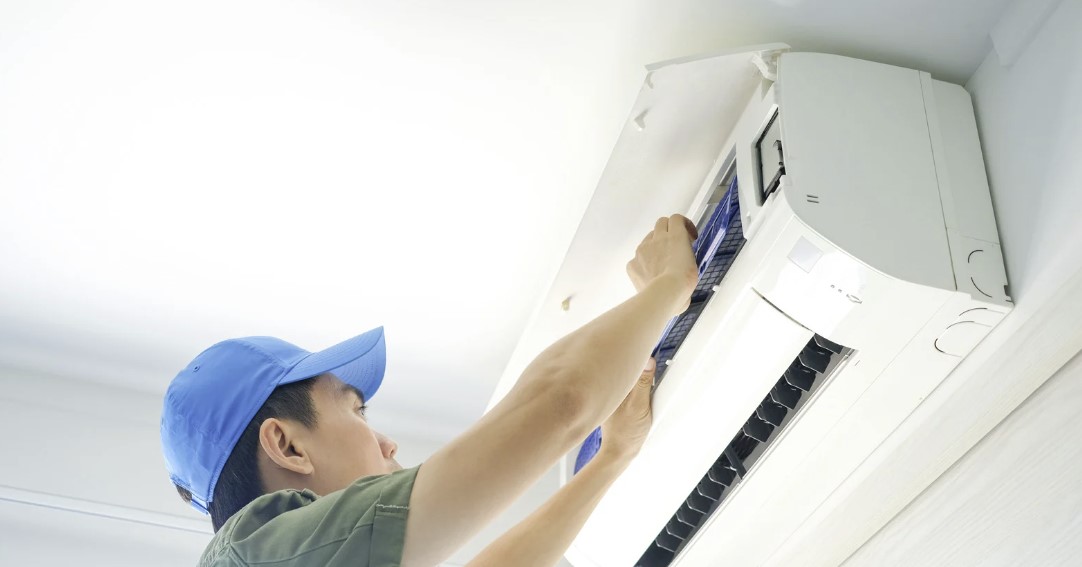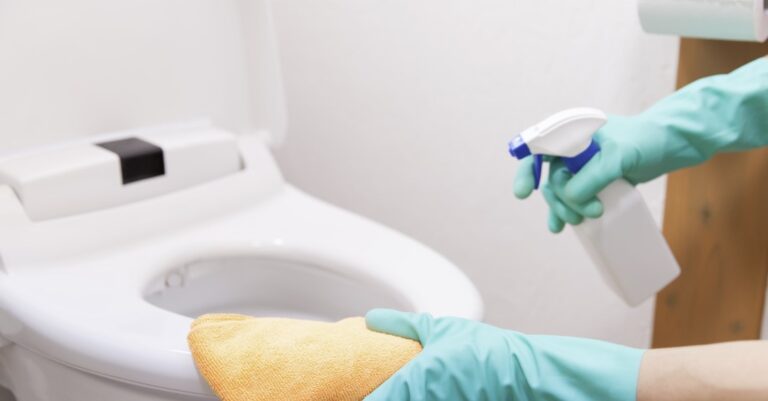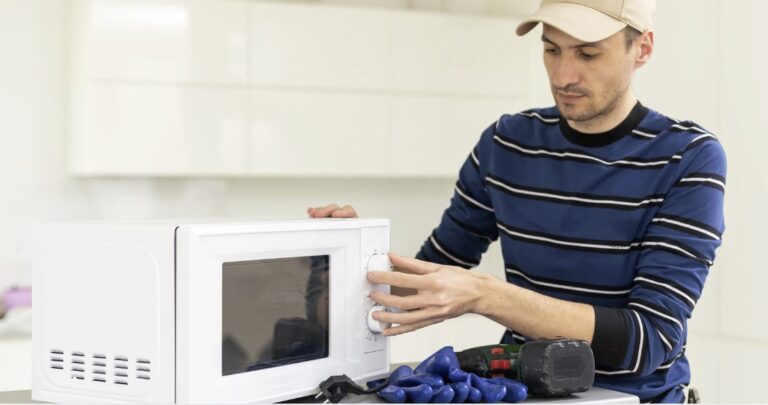List Of Samsung Air Conditioner Error Codes Troubleshooting Guide!
Samsung is known for producing high-quality air conditioners with a modern aesthetic. The Samsung air conditioner’s smart device provides efficient cooling. From time to time, you could notice that your device is flashing an error code. These Samsung Air Conditioner Error Codes are markers for internal problems that need fixing in your unit. This post will give you a thorough list of Samsung AC error codes and instructions on how to decipher them to identify and fix any issues with your Samsung air conditioner.
Samsung Air Conditioner Error Codes: The Complete List
| Code | Possible Cause | Solution |
| Ch | Prohibit starting during operation of the Crack case heater | Check the operation of the Crack case heater |
| E108 | Error due to repeated communication address | Verify communication addresses |
| E121 | Error on room temperature sensor of indoor unit (Short or Open) | Inspect and replace room temperature sensor |
| E122 | Error on EVA IN sensor of indoor unit (Short or Open) | Examine and replace EVA IN sensor |
| E123 | Error on EVA OUT sensor of indoor unit (Short or Open) | Inspect and replace EVA OUT sensor |
| E124 | Communication error sends from indoor unit | Investigate and resolve indoor unit communication error |
| E128 | Indoor unit EVA IN sensor breakaway | Address EVA IN sensor breakage |
| E129 | Indoor unit EVA OUT sensor breakaway | Address EVA OUT sensor breakage |
| E131 | Indoor unit heater sensor error | Check and replace indoor unit heater sensor |
| E151 | Indoor unit EEV open failure(When 2* detection) | Investigate EEV open failure (When 2* detection) |
| E152 | Indoor unit EEV close failure(When 2“ detection) | Investigate EEV close failure (When 2“ detection) |
| E153 | Indoor unit floating S/V error(When 2“ detection) | Examine and resolve floating S/V error (When 2“ detection) |
| E154 | Indoor unit fan error | Address indoor unit fan error |
| E162 | Outdoor unit EEPROM error | Investigate and resolve outdoor unit EEPROM error |
| E198 | Error on thermal fuse of indoor unit (Open) | Inspect and replace indoor unit thermal fuse |
| E201 | Communication error between indoor unit and outdoor unit (Pre tracking failure or when actual number of indoor units are different from the indoor unit quantity setting on the outdoor unit) Error due to communication tracking failure after initial power supply (The error occurs with the failure regardless of the number of devices) | Verify communication between indoor and outdoor units |
| E202 | Communication error between indoor and outdoor unit (When not received in every room after completing the tracking) | Ensure communication between indoor and outdoor units |
| E203 | Communication error between outdoor unit inv – main micom (For PF #4~#6 controller, error will be determined from the time when compressor turns on) | Investigate outdoor unit inv-main micom communication error |
| E221 | Error on outdoor temperature sensor (Short or Open) | Check and replace outdoor temperature sensor |
| E231 | Error on outdoor COND OUT sensor (Short or Open) | Inspect and replace outdoor COND OUT sensor |
| E241 | COND OUT sensor breakaway | Address COND OUT sensor breakage |
| E251 | Digital comp.1 discharge temperature sensor(Short or Open) | Inspect and replace digital comp.1 discharge temperature sensor |
| E256 | Fixed comp.1 discharge temperature sensor(Short or Open) | Examine and replace fixed comp.1 discharge temperature sensor |
| E257 | Fixed comp.2 discharge temperature sensor(Short or Open) | Inspect and replace fixed comp.2 discharge temperature sensor |
| E258 | Fixed comp.3 discharge temperature sensor(Short or Open) | Address fixed comp.3 discharge temperature sensor issues |
| E262 | Fixed compl Discharge temperature sensor breakaway | Resolve fixed compl discharge temperature sensor breakage |
| E263 | Fixed comp2 Discharge temperature sensor breakaway | Investigate and address fixed comp2 discharge temperature sensor breakage |
| E264 | Fixed comp3 Discharge temperature sensor breakaway | Examine and resolve fixed comp3 discharge temperature sensor breakage |
| E265 | Digital compl Sump temperature sensor breakaway. Fixed compl Sump temperature sensor breakaway | Address digital compl and fixed compl sump temperature sensor breakage |
| E267 | Fixed comp2 Sump temperature sensor breakaway | Investigate and resolve fixed comp2 sump temperature sensor breakage |
| E268 | Fixed comp3 Sump temperature sensor breakaway | Examine and address fixed comp3 sump temperature sensor breakage |
| E269 | Suction temperature sensor breakaway | Address suction temperature sensor breakage |
| E271 | Comp.1 Sump temperature sensor(Short or Open) | Check and replace Comp.1 sump temperature sensor |
| E291 | High-pressure sensor(Short or Open) | Inspect and replace high-pressure sensor |
| E296 | Low-pressure sensor(Short or Open) | Address low-pressure sensor issues |
| E307 | Oil balance sensorl (Short or Open) | Investigate and resolve oil balance sensor issues |
| E308 | Suction sensor(Short or Open) | Inspect and replace suction sensor |
| E311 | Double pipe sensor(Short or Open) | Address double pipe sensor issues |
| E320 | Error on OLP sensor (Short or Open) | Check and replace OLP sensor |
| E403 | Compressor down due to freeze protection control | Investigate and address compressor freeze protection control issues |
| E404 | System stop due to overload protection control | Resolve system stoppage due to overload protection control |
| E407 | Comp, down by high pressure | Examine and address compressor shutdown due to high pressure |
| E410 | Comp, down by low pressure | Investigate and resolve compressor shutdown due to low pressure |
| E413 | Comp, down by the sump protection control | Address compressor shutdown due to sump protection control |
| E416 | Comp, down by the discharge temperature sensor | Inspect and address compressor shutdown due to discharge temperature sensor |
| E422 | Blockage detected on high-pressure pipe | Clear blockage on high-pressure pipe |
| E425 | Reverse phase or open phase | Address reverse or open phase issues |
| E428 | Comp down by compression ratio control | Investigate and resolve compressor shutdown due to compression ratio control |
| E431 | Equal oil valve 1 self-diagnosis | Address equal oil valve 1 self-diagnosis issues |
| E440 | Heating operation restricted at outdoor temperature overheating value (default: 30 °C) | Verify and address outdoor temperature overheating value |
| E441 | Cooling operation restricted at outdoor temperature below cool value (default 0°Q | Check and address cooling operation restrictions due to low outdoor temperature |
| E442 | Forbid an operation during heat mode with refrigerant charging operation when outdoor temperature is over 15°C | Ensure proper operation during heat mode with refrigerant charging at higher outdoor temperatures |
| E443 | Start prohibition by refrigerant pressure error | Investigate and address start prohibition due to refrigerant pressure error |
| E452 | Instant power-off error | Address instant power-off error |
| E453 | Fan motor hifi temperature error | Investigate and resolve fan motor high-temperature error |
| E454 | Fan motor RPM error | Address fan motor RPM error |
| E455 | Fan motor IPM high-temperature error | Examine and address fan motor IPM high-temperature error |
| E456 | Fan motor overcurrent error | Investigate and resolve fan motor overcurrent error |
| E457 | Fan motor reverse rotation error | Address fan motor reverse rotation error |
| E458 | Fan speed error | Examine and address fan speed error |
| E461 | Error due to operation failure of inverter compressor | Investigate and resolve inverter compressor operation failure |
| E461 | Low current | Address low current issues |
| E462 | System stop due to full current control | Resolve system stoppage due to full current control |
| E463 | System stop due to OLP temperature control | Investigate and address system stoppage due to OLP temperature control |
| E464 | System stop due to DC Peak | Address system stoppage due to DC Peak |
| E465 | Compressor overload prevention | Investigate and address compressor overload prevention |
| E466 | DC-Link voltage under/over error | Examine and address DC-Link voltage under/over error |
| E467 | Error due to abnormal rotation of the compressor or unconnected wire of compressor | Investigate and address abnormal compressor rotation or unconnected compressor wire |
| E468 | Error on current sensor (Short or Open) | Check and replace current sensor |
| E469 | Error on DC-Link voltage sensor (Short or Open) | Inspect and replace DC-Link voltage sensor |
| E470 | Outdoor unit EEPROM Read/Write error (Option) | Investigate and address outdoor unit EEPROM Read/Write error (Option) |
| E471 | Outdoor unit EEPROM Read/Write error (H/W) | Investigate and address outdoor unit EEPROM Read/Write error (H/W) |
| E472 | AC Line Zero Cross Signal out | Address AC Line Zero Cross Signal out error |
| E473 | Comp Lock error | Investigate and resolve compressor lock error |
| E474 | Error on IPM Heat Sink sensor of inverter 1 (Short or Open) | Inspect and replace IPM Heat Sink sensor of inverter 1 |
| E475 | Error of inverter fan 2 | Investigate and address inverter fan 2 error |
| E484 | PFC Overload (Overcurrent) Error | Address PFC Overload (Overcurrent) Error |
| E485 | Error on input current sensor of inverter 1 (Short or Open) | Check and replace input current sensor of inverter 1 |
| E500 | IPM overheat error on inverter 1 | Investigate and resolve IPM overheat error on inverter 1 |
| E508 | Smart install is not installed | Install Smart install |
| E554 | Gas leak detected | Address gas leak detected |
| E556 | Error due to mismatching capacity of indoor and outdoor unit | Ensure matching capacity of indoor and outdoor units |
| E557 | DPM remote controller option error | Investigate and resolve DPM remote controller option error |
| E560 | Switch option setting error(rvot applied) | Correct switch option setting error |
| E590 | Inverter EEPROM Checksum error | Investigate and address Inverter EEPROM Checksum error |
| E660 | Error of inverter Boot Code | Investigate and resolve inverter Boot Code error |
| P701 | Indoor unit floating S/V error(When 1“ detection) | Examine and resolve indoor unit floating S/V error (When 1“ detection) |
| P702 | Indoor unit EEV close failure(When 1“ detection) | Investigate indoor unit EEV close failure (When 1“ detection) |
| P703 | Indoor unit EEV open failure(When 1“ detection) | Resolve indoor unit EEV open failure (When 1“ detection) |
Read More About Samsung:
- Causes of a Samsung Dryer Not Heating
- Samsung Washer UR Code
- Samsung Washer Code U6 Errors
- Samsung Washer SC Error Code
- Common Samsung Dryer Problems
Samsung Remote Controls Buttons Meaning
C2 error in Samsung AC
A C2 error in Samsung AC usually denotes a problem with the interior fan motor. A faulty control board, wiring, or motor could cause this error. Improper operation of the indoor fan motor can result in insufficient airflow and impact the AC unit’s overall cooling capacity.
Samsung inverter AC E4 error code
Usually, the Samsung inverter AC E4 error code denotes a compressor issue. The compressor is one crucial part that keeps the air conditioning unit cool. The compressor is not operating correctly when the E4 error number appears on the display.
Samsung Mini Split Error Codes
Samsung mini-split air conditioners use error codes to assist technicians and users in identifying system problems. You can access these codes by using the indoor unit’s remote control or LED display. The following list of standard Samsung mini split error codes, along with their explanations:
1. Error E1
Usually, this code denotes a problem with communication between the indoor and outdoor equipment. The cause could be a malfunctioning control board or wiring problem.
2. Error E2
The E2 error indicates that the temperature sensor is incorrectly connected. Sometimes, a malfunctioning sensor or a faulty connection can cause the problem.
3. Error E3
This number indicates that there may be a temperature sensor issue with the condenser coil. It can be the result of coil troubles or sensor problems.
4. Error E4
An E4 error typically denotes a refrigerant leak or a problem with the heat exchanger temperature sensor on the outside unit.
5. Error E5
The wired remote control and the indoor unit’s communication are related to E5. It can be a sign of a malfunctioning remote control or a wiring problem.
6. Error E6
The indoor fan motor is the source of the E6 fault. A wiring issue or a broken motor can cause it.
7. Error E7
Error code E7 indicates a problem with the outside fan motor. It could be the result of bad wiring or a motor issue.
8. Error E8
This number indicates a high-temperature problem with the outdoor unit, possibly due to insufficient refrigerant or ventilation.
9. Error E9
E9 indicates a high-pressure switch malfunction in the system, which frequently results from high pressure in the refrigerant circuit.
10. Error E10
An E10 error usually indicates a low refrigerant pressure-related problem with the low-pressure switch.
Important Note:
Please be aware that the fixes for the Samsung Air Conditioner Error Codes might change based on the model of your AC. When encountering error codes with your air conditioner, it is best to consult the user manual or seek assistance from a qualified technician to identify and resolve the issue accurately. To properly diagnose and fix complicated or persistent problems, getting help from a certified HVAC specialist is essential.
Read More about Air Conditioner:
- Why My Portable AC Spitting Water
- GE Air Conditioner Control Panel Not Working
- Troubleshoot an AC Light Blinking Chevy Traverse
- How to Reset Mitsubishi Air Conditioner
Frequently Asked Questions
What Does The Error Code “CH” Mean In A Samsung Inverter AC?
The error code “CH” on a Samsung inverter air conditioner usually indicates an issue with the inside temperature sensor. There may be a problem with the sensor or with the connection. You could have the sensor checked and changed, or you might need to call a specialist for help.
What Does Fault Code 201 Mean on a Samsung Inverter AC?
Error number 201 indicates a communication issue between the indoor and outdoor units on a Samsung inverter air conditioner. This can be the result of problems with the control board or wiring. Examine the wiring connections and, if necessary, obtain professional assistance to fix the issue.
On a Samsung air conditioning machine, what does trouble code 1 mean?
A Samsung air conditioning unit’s error number 1 usually indicates an issue with the indoor fan motor. It could be the result of a wiring problem or a broken motor. To fix this, you should assess the motor’s condition, verify the wiring connections, and get professional assistance for any necessary repairs or replacements.
Why are my Samsung Air Conditioning Unit’s lights Flickering green and red?
When the red and green lights on your Samsung air conditioner blink simultaneously, there may be a problem with the power supply or voltage variations. Power surges or other electrical issues may be the cause of this. To fix this, ensure the power source is steady, consider utilizing a voltage stabilizer, and get advice from an electrician if the problem continues
How to Reset a Samsung AC?
These steps are to reset your Samsung AC:
Turn off the Air Conditioner with the power button or remote.
Unplug the AC or turn off the circuit breaker to disconnect it
A few minutes (around five) should pass for any remaining power to disappear.
Reattach the power supply to the AC
Press the power button or the remote to turn the Air Conditioner back on.
This procedure can assist in fixing minor bugs or flaws in the system and will successfully reset your Samsung AC.



